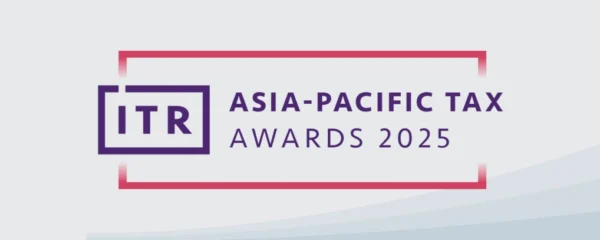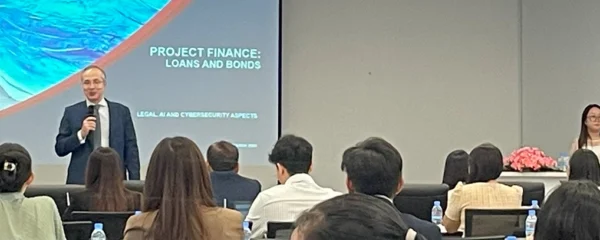
Vietnam: New Decree Amending Regulations on Mitigation of Greenhouse Gas Emissions and Protection of the Ozone Layer
June 19, 2025
Introduction: Prior Legal Framework
Until recently, the framework was centred around Decree No. 06/2022/ND-CP “On Mitigation of Green House Gas (GHG) Emissions and Protection of Ozone Layer”, dated 7 January 2022 (Decree 06).
Decree 06 applied to:
- Businesses and facilities emitting GHGs (e.g., factories, transport, buildings).
- Producers/importers of ozone-depleting substances (ODS).
- Entities involved in carbon credit trading or offset projects.
Among other things, it provided for:
- GHG inventory for large emitters (e.g., thermal power plants, industrial production facilities).
- Requirement to develop and implement GHG reduction plans (with quotas from 2026 onward).
- Requirement to report and verify GHG emissions through the MRV system (Measurement, Reporting, Verification).
- Possibility to participate in a carbon trading exchange (CTX)—buy/sell GHG quotas and carbon credits.
Facilities could generate carbon credits through emission-reduction projects. Carbon credits could then be traded or used to offset emissions exceeding their quota.
Updated Legal Framework
The new legal framework was introduced by Decree No. 119/2025/ND-CP, dated June 9, 2025 (Decree 119), which substantially expands and details existing regulations.
Among other things, Decree 119:
- elaborated on the National Registration System: a digital platform to track GHG quotas and credits.
- In terms of responsibility for the MRV system – handled by the Ministry of Agriculture and Environment (i.e. Under Decree 06, it was handled by the Ministry of Natural Resources & Environment and now under the new name of the merged Ministry of Natural Resources & Environment and Ministry of Agriculture & Rural Development).
- Provided more specific guidance with respect to the GHG Emission Quotas, namely:
- Phase 1 (2025–2026): quotas apply only to thermal power plant, steel, and cement manufacturing facilities (which is included in the list determined by the PM).
- Phase 2 (2027–2030): Broader application; quotas set by sector ministries.
- Quotas are tradeable and borrowable.
- Pilot Carbon Trading Platform to be fully launched by 2028.
- From 2029: it is anticipated that there would be formal auction systems and full regulations for domestic and international participation.
Who Can Participate?
Large GHG emitters such as:
- Thermal power plants
- Steel, cement factories
- Big commercial buildings and cargo transport companies
There is also an optional/voluntary participation for smaller businesses and investors to:
- Develop emission-reduction projects
- Generate carbon credits
- Sell credits on the carbon market
- Adopt sustainable technologies.
MRV Inventories
Decree 119:
- Specifies exact formats, deadlines, and procedures for GHG inventories and MRV.
- Establishes GHG inventory appraisal councils with technical experts.
- Introduces sector-specific methods and use of international protocols.
- Facilities must now:
- Prepare every-two-year inventory reports.
- Work with certified third-party appraisers.
- Submit inventories through the National Registration System.
- Decree 119 distinguishes between large emitters (e.g., steel, cement, power) and smaller facilities — applying differentiated inventory rules.
Integration With International Mechanisms (Paris Agreement)
Decree 119 envisages participation in:
- Article 6.2 bilateral trading (e.g., Japan-Vietnam ITMO cooperation).
- Article 6.4 project mechanism (UNFCCC-supervised).
- CDM-to-Article 6.4 conversion (until Sept 30, 2025).
- Envisages international transfer of credits (e.g., issuance and reporting under Paris compliance).
This is crucial for:
- Foreign investors seeking to buy ITMOs from Vietnam.
- Vietnamese developers seeking to register emission reduction projects under global frameworks.
To Conclude
The Decree 06 as amended by Decree 119 have created a solid vision and foundation to:
- Establish Vietnam’s domestic carbon market.
- Enable integration into international trading frameworks.
- Define obligations and opportunities for businesses.
For businesses and manufacturers, there are now clearer compliance rules. At the same time – new opportunities in terms of carbon credits transfers.
Recent Publications
Legal Update
Recent News

Andersen in Cambodia and Vietnam shortlisted for the 2025 ITR Asia-Pacific Tax Awards
Read More »
Andersen Vietnam Publishes Its Market Entry Guide for Vietnam Prepared in Collaboration With the Investment Promotion Agency of Da Nang
Read More »
Andersen in Cambodia at the Project Finance Workshop for the securities regulator!
Read More »


